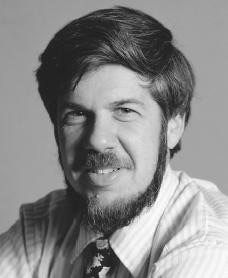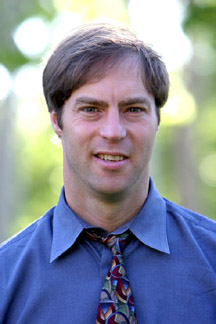Related Research Articles

In evolutionary biology, punctuated equilibrium is a theory that proposes that once a species appears in the fossil record, the population will become stable, showing little evolutionary change for most of its geological history. This state of little or no morphological change is called stasis. When significant evolutionary change occurs, the theory proposes that it is generally restricted to rare and geologically rapid events of branching speciation called cladogenesis. Cladogenesis is the process by which a species splits into two distinct species, rather than one species gradually transforming into another.

Stephen Jay Gould was an American paleontologist, evolutionary biologist, and historian of science. He was one of the most influential and widely read authors of popular science of his generation. Gould spent most of his career teaching at Harvard University and working at the American Museum of Natural History in New York. In 1996, Gould was hired as the Vincent Astor Visiting Research Professor of Biology at New York University, after which he divided his time teaching between there and Harvard.

A transitional fossil is any fossilized remains of a life form that exhibits traits common to both an ancestral group and its derived descendant group. This is especially important where the descendant group is sharply differentiated by gross anatomy and mode of living from the ancestral group. These fossils serve as a reminder that taxonomic divisions are human constructs that have been imposed in hindsight on a continuum of variation. Because of the incompleteness of the fossil record, there is usually no way to know exactly how close a transitional fossil is to the point of divergence. Therefore, it cannot be assumed that transitional fossils are direct ancestors of more recent groups, though they are frequently used as models for such ancestors.

Cladogenesis is an evolutionary splitting of a parent species into two distinct species, forming a clade.

Recurring cultural, political, and theological rejection of evolution by religious groups exists regarding the origins of the Earth, of humanity, and of other life. In accordance with creationism, species were once widely believed to be fixed products of divine creation, but since the mid-19th century, evolution by natural selection has been established by the scientific community as an empirical scientific fact.

Stephen Charles Meyer is an American historian, author, and former educator. He is an advocate of intelligent design, a pseudoscientific creationist argument for the existence of God. Meyer was a founder of the Center for Science and Culture (CSC) of the Discovery Institute (DI), which is the main organization behind the intelligent design movement. Before joining the institute, Meyer was a professor at Whitworth College. He is a senior fellow of the DI and the director of the CSC.
Niles Eldredge is an American biologist and paleontologist, who, along with Stephen Jay Gould, proposed the theory of punctuated equilibrium in 1972.
In creationism, a religious view based on a literal reading of the Book of Genesis and other biblical texts, created kinds are purported to be the original forms of life as they were created by God. They are also referred to in creationist literature as kinds, original kinds, Genesis kinds, and baramins.
The gene-centered view of evolution, gene's eye view, gene selection theory, or selfish gene theory holds that adaptive evolution occurs through the differential survival of competing genes, increasing the allele frequency of those alleles whose phenotypic trait effects successfully promote their own propagation. The proponents of this viewpoint argue that, since heritable information is passed from generation to generation almost exclusively by DNA, natural selection and evolution are best considered from the perspective of genes.
In biology, saltation is a sudden and large mutational change from one generation to the next, potentially causing single-step speciation. This was historically offered as an alternative to Darwinism. Some forms of mutationism were effectively saltationist, implying large discontinuous jumps.

Evolution: A Theory in Crisis is a 1985 book by Michael Denton, in which the author argues that the scientific theory of evolution by natural selection is a "theory in crisis". Reviews by scientists say that the book distorts and misrepresents evolutionary theory and contains numerous errors.
Daniel Loxton is a Canadian writer, illustrator, and skeptic. He wrote or co-wrote several books including Tales of Prehistoric Life, a children's science trilogy, and Abominable Science!, a scientific look at cryptozoology. As editor of Junior Skeptic, Loxton writes and illustrates most issues of Junior Skeptic, a children's science section in the Skeptics Society's Skeptic magazine.
The World Summit on Evolution is an evolutionary biology meeting hosted at the Galapagos Islands by Universidad San Francisco de Quito (USFQ), an Ecuadorian private liberal arts university. Its focus is on recent research and new advances in our understanding of evolution and the diversity of life.

Why Evolution is True is a popular science book by American biologist Jerry Coyne. It was published in 2009, dubbed "Darwin Year" as it marked the bicentennial of Charles Darwin and the hundred and fiftieth anniversary of the publication of his On the Origin of Species By Means of Natural Selection. Coyne examines the evidence for evolution, some of which was known to Darwin (biogeography) and some of which has emerged in recent years. The book was a New York Times bestseller, and reviewers praised the logic of Coyne's arguments and the clarity of his prose. It was reprinted as part of the Oxford Landmark Science series.

Donald Ross Prothero is an American geologist, paleontologist, and author who specializes in mammalian paleontology and magnetostratigraphy, a technique to date rock layers of the Cenozoic era and its use to date the climate changes which occurred 30–40 million years ago. He is the author or editor of more than 30 books and over 300 scientific papers, including at least 5 geology textbooks.
The Extended Evolutionary Synthesis (EES) consists of a set of theoretical concepts argued to be more comprehensive than the earlier modern synthesis of evolutionary biology that took place between 1918 and 1942. The extended evolutionary synthesis was called for in the 1950s by C. H. Waddington, argued for on the basis of punctuated equilibrium by Stephen Jay Gould and Niles Eldredge in the 1980s, and was reconceptualized in 2007 by Massimo Pigliucci and Gerd B. Müller.

Frozen Evolution is a 2008 book written by parasitologist Jaroslav Flegr, which aims to explain modern developments in evolutionary biology. It also contains information boxes which clarify important topics in science like peer review, scientific journals, citation metrics, philosophy of science, paradigm shifts, and Occam's razor. Flegr's previous research in toxoplasmosis is also mentioned.
The sloshing bucket model of evolution is a theory in evolutionary biology that describes how environmental disturbances varying in magnitude will affect the species present. The theory emphasizes the causal relationship between environmental factors that impinge and affect genealogical systems, providing an overarching view that determines the relationship between the variety of biological systems.

Bruce Smith Lieberman is an American paleontologist.
References
- 1 2 Eldredge, Niles and John Thompson (June 2008). "Review of Evolution: What the Fossils Say and Why It Matters". Evolution. 62 (6): 1544–1546. doi:10.1111/j.1558-5646.2008.00382.x.
- ↑ Dodson, Peter (May 2009). "Review: Evolution: What the Fossils Say and Why it Matters". Reports of the National Center for Science Education. 29 (3): 39–40.
- ↑ Bastian, Daniel (June 16, 2012). "REVIEW: What the Fossils Say and Why It Matters". Tech Thoughts. Retrieved March 16, 2013.
- ↑ Jago, Crispian (November 3, 2008). "Donald R. Prothero: Evolution – What the Fossils Say and Why It Matters". The Reason Stick. Retrieved March 29, 2013.
- ↑ Callahan, Tim (2008). "What the Fossils Say — In Spades!". Skeptic. 14 (1): 66.